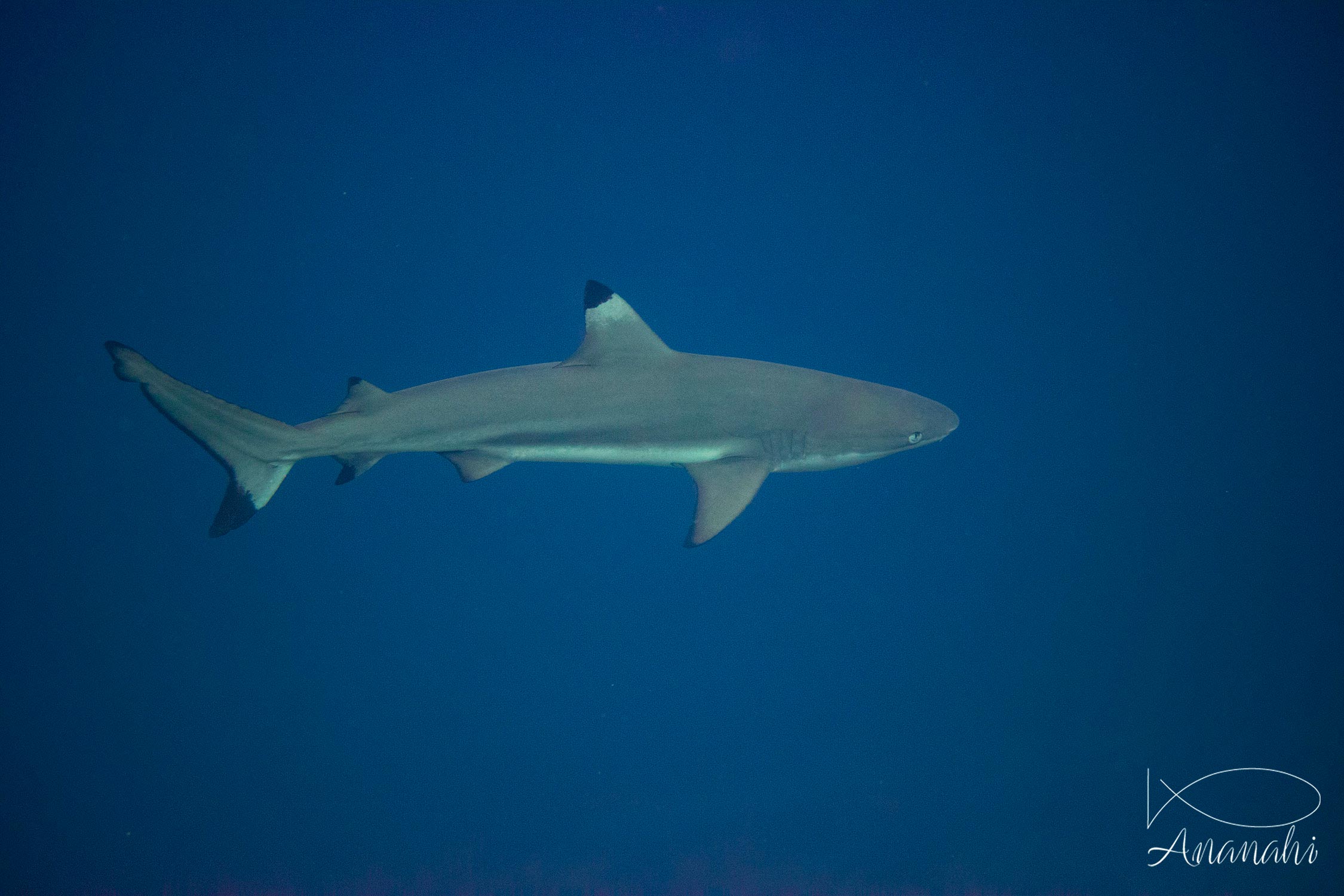
Scientific name: Carcharhinus melanopterus
Size: Generally 5.3 feet
Color: brown gray above, white below
Distinguishing feature: All fins have black tips, with clear borders
Where did we see it: Thailand, French polynesia, Mayotte, Maldives, Raja Ampat

Scientific name: Carcharhinus melanopterus
Size: Generally 5.3 feet
Color: brown gray above, white below
Distinguishing feature: All fins have black tips, with clear borders
Where did we see it: Thailand, French polynesia, Mayotte, Maldives, Raja Ampat
The most crossed reef shark in the reef. Inoffensive, it only eats small fish early in the morning or late at night (around 5am and 5pm).
This shark is very important for the reefs, it feeds effectively by eating sick fish or end of life fish and, being sedentary, prevents larger species to arrive too close to the coasts.
Parrotfish create a protective envelope around them when they are sleeping.
So, don't put the light on them during night dive to don't to wake them up and break this envelope.
Some sharks can stay motionless on the sand (white tips reef sharks, nurse sharks, etc.).
These sharks don't have to swim to bring oxygen to their gills like other sharks (grey, hammerheads tc.)
Turtles are in economy mode when they are sleeping. If they are woken during night, they may not have enough air to return to surface.
So, please be careful during night dives!